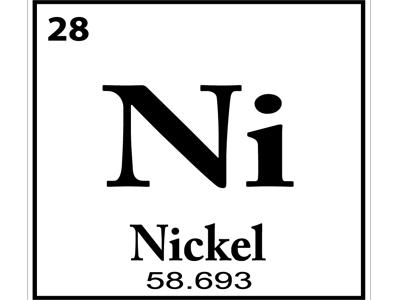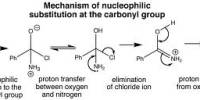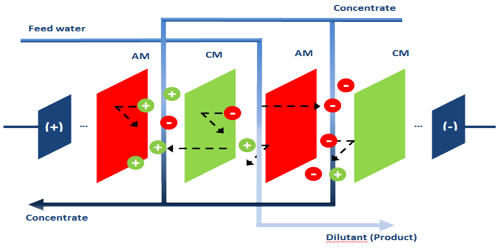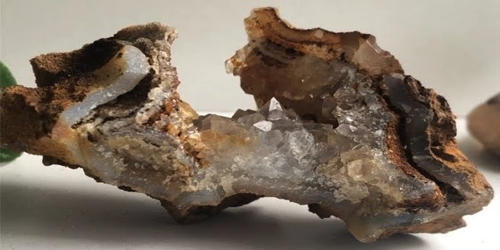Nickel is a chemical element with the symbol Ni and atomic number 28. It is a hard, malleable, ductile, lustrous, silver-white metal with a face-centered cubic crystalline structure. It is a silvery-white lustrous metal with a slight golden tinge. It is a fairly good conductor of heat and electricity.
Nickel belongs to the transition metals and is hard and ductile. Ductile means capable of being drawn into thin wires. Malleable means capable of being hammered into thin sheets. Pure native nickel is found in Earth’s crust only in tiny amounts, usually in ultramafic rocks, and in the interiors of larger nickel-iron meteorites that were not exposed to oxygen when outside Earth’s atmosphere.
Properties
- atomic number: 28
- atomic weight: 58.69
- melting point: 1,453 °C (2,647 °F)
- boiling point: 2,732 °C (4,950 °F)
- density: 8.902 (25 °C)
- oxidation states: 0, +1, +2, +3

Most nickel compounds are blue or green. Nickel dissolves slowly in dilute acids but, like iron, becomes passive when treated with nitric acid. Its melting point is 1,555°C (2,831°F) and its boiling point is about 2,835°C (5,135°F). The density is 8.90 grams per cubic centimeter.
Nickel is only one of three naturally occurring elements that are strongly magnetic. Meteoric nickel is found in combination with iron, a reflection of the origin of those elements as major end products of supernova nucleosynthesis. An iron-nickel mixture is thought to compose Earth’s outer and inner cores. It ranks about 22nd among the chemical elements in terms of abundance in the Earth’s crust.
Uses
The use of nickel has been traced as far back as 3500 BCE. It was first isolated and classified as a chemical element in 1751 by Axel Fredrik Cronstedt, who initially mistook the ore for a copper mineral, in the cobalt mines of Los, Hälsingland, Sweden.
- The most crucial use of this element is that it is used to make coins.
- It is used in making wires.
- It is used in gas turbines and rocket engines as it has the capability to resist corrosion even at high temperatures.
- It is used to make a variety of alloys which are further used to make armor plating, nails, or pipes.
The major use of nickel is in the preparation of alloys. An economically important source is the iron ore limonite, which often contains 1–2% nickel. Nickel steels are used in safes and armor plates. Alloys of nickel and copper are widely used, e.g., Monel metal, nickel bronze, and nickel silver. It is used in hundreds of industrial and consumer applications.
















